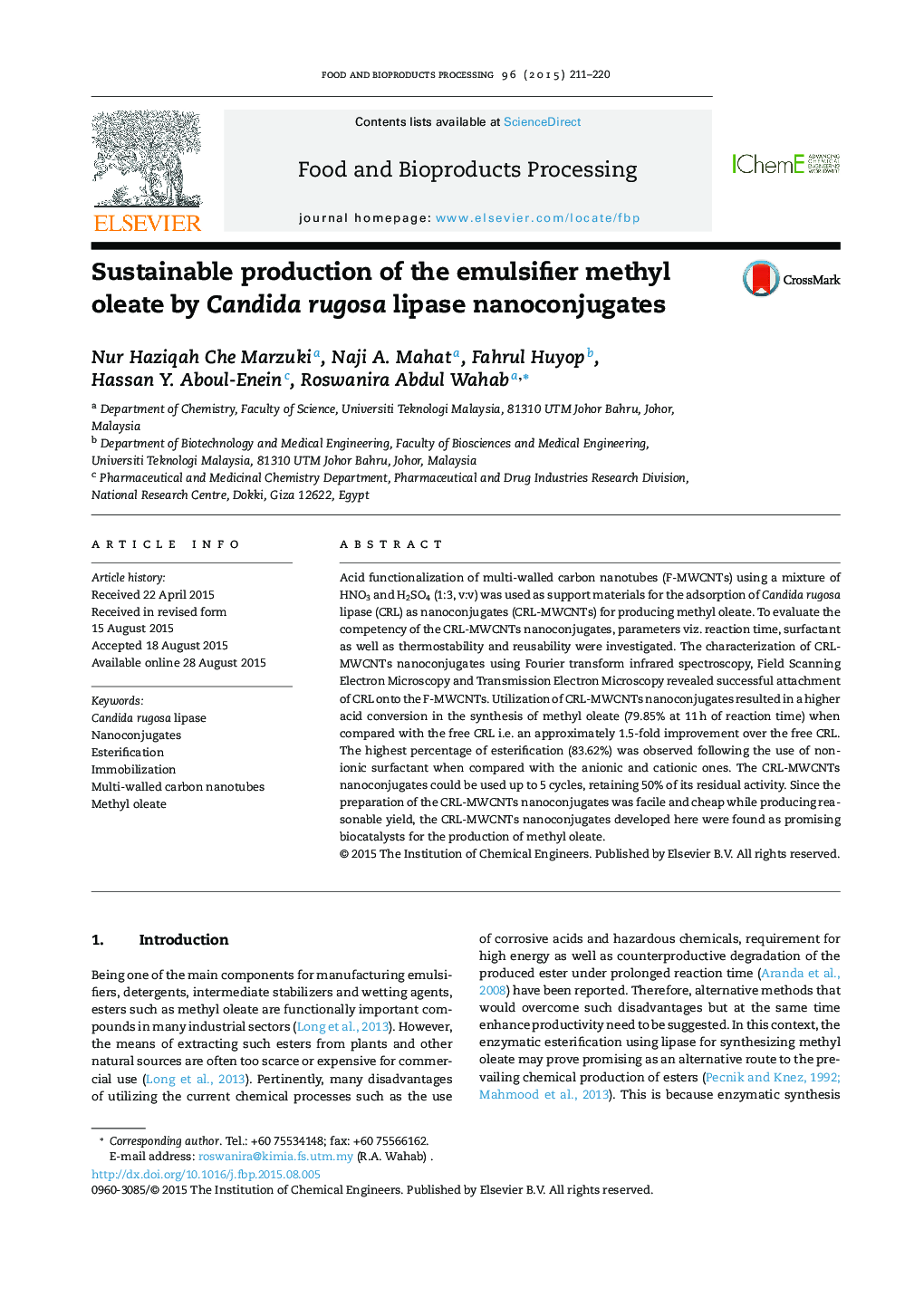| Article ID | Journal | Published Year | Pages | File Type |
|---|---|---|---|---|
| 18837 | Food and Bioproducts Processing | 2015 | 10 Pages |
•The activity of the CRL-MWCNTs was 1.5-fold higher than that of the free CRL.•Addition of Triton X-100 enhanced the yield of methyl oleate to as much as 83.62%.•The CRL-MWCNTs can be reused up to 5 cycles.
Acid functionalization of multi-walled carbon nanotubes (F-MWCNTs) using a mixture of HNO3 and H2SO4 (1:3, v:v) was used as support materials for the adsorption of Candida rugosa lipase (CRL) as nanoconjugates (CRL-MWCNTs) for producing methyl oleate. To evaluate the competency of the CRL-MWCNTs nanoconjugates, parameters viz. reaction time, surfactant as well as thermostability and reusability were investigated. The characterization of CRL-MWCNTs nanoconjugates using Fourier transform infrared spectroscopy, Field Scanning Electron Microscopy and Transmission Electron Microscopy revealed successful attachment of CRL onto the F-MWCNTs. Utilization of CRL-MWCNTs nanoconjugates resulted in a higher acid conversion in the synthesis of methyl oleate (79.85% at 11 h of reaction time) when compared with the free CRL i.e. an approximately 1.5-fold improvement over the free CRL. The highest percentage of esterification (83.62%) was observed following the use of nonionic surfactant when compared with the anionic and cationic ones. The CRL-MWCNTs nanoconjugates could be used up to 5 cycles, retaining 50% of its residual activity. Since the preparation of the CRL-MWCNTs nanoconjugates was facile and cheap while producing reasonable yield, the CRL-MWCNTs nanoconjugates developed here were found as promising biocatalysts for the production of methyl oleate.
Graphical abstractFigure optionsDownload full-size imageDownload high-quality image (119 K)Download as PowerPoint slide
